#primatomorpha
Explore tagged Tumblr posts
Text
Worth noting that they don't fly (they glide, as seen in the last two images), and they are not lemurs.
A better name for them is Colugo, and there are two species, the Sunda flying lemur (Galeopterus variegatus) and the Philippine flying lemur (Cynocephalus volans)
The live in SE Asia and the Philippines, while lemurs are found only on Madagascar.
However they do seem to be the closest living relatives of primates (which includes lemurs, galagos, lorises, and tarsiers as well as monkeys and apes), while not being primates themselves.
Absolutely delighted to learn that flying lemurs exist.
Look at these sentient blankets!
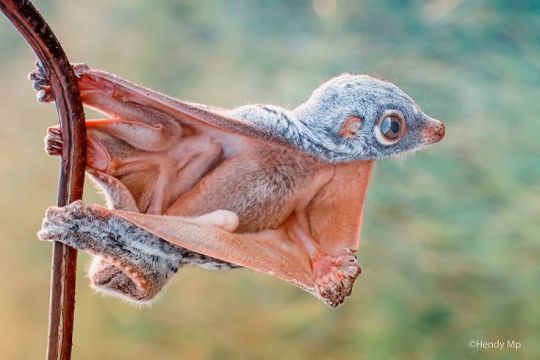
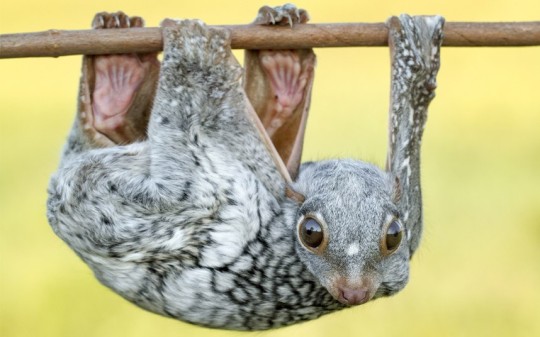
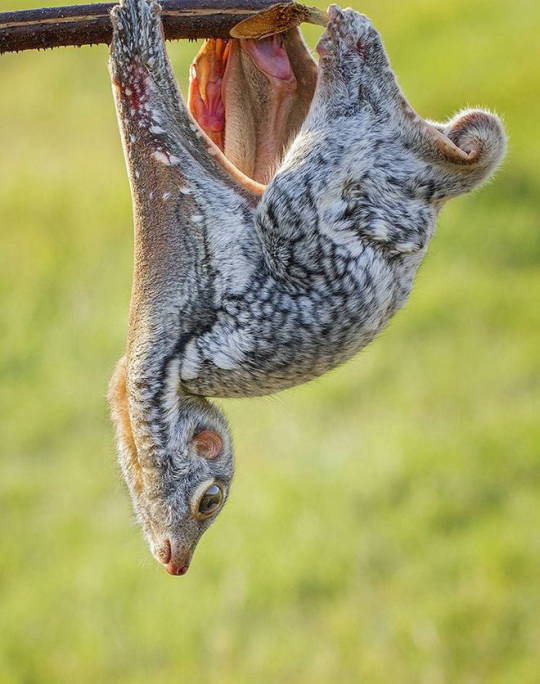
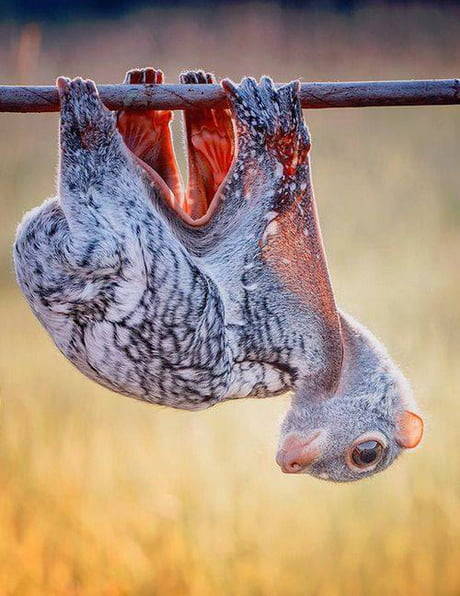
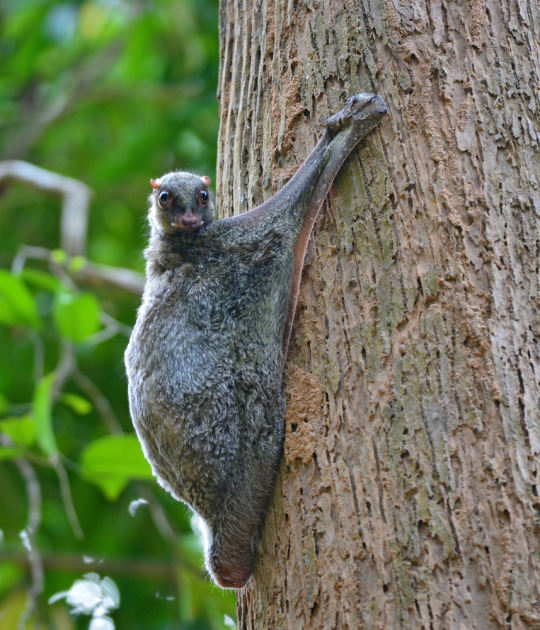
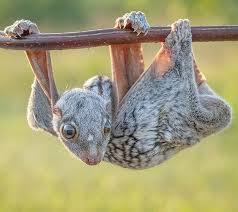
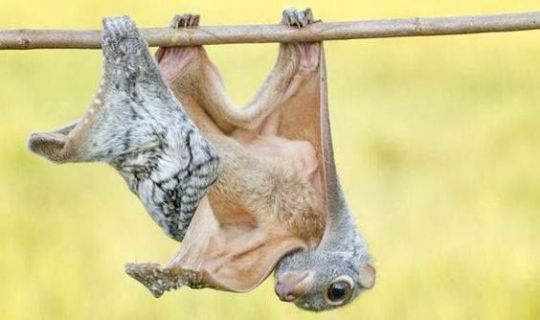
Look at those big eyes! And the little baby!!!
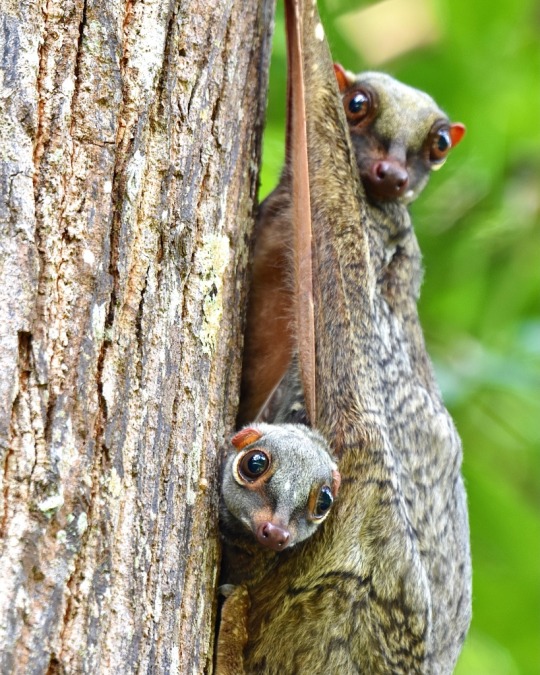
And they look like goofy demons swooping around at night.
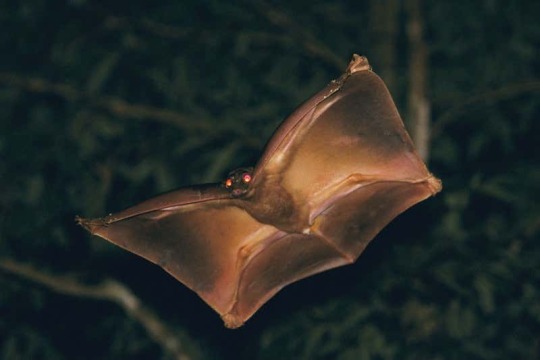
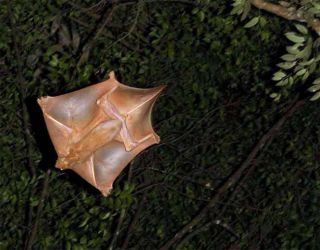
These guys are great, 10/10 animal design.
168 notes
·
View notes
Text
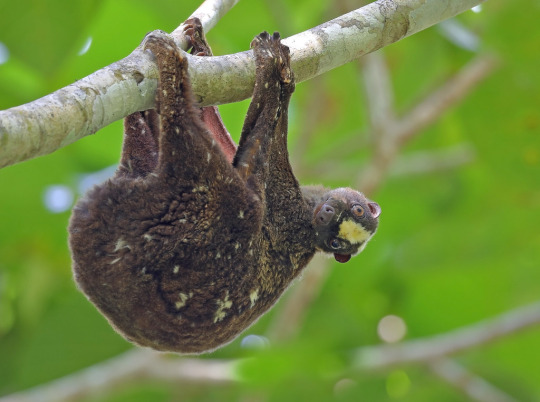
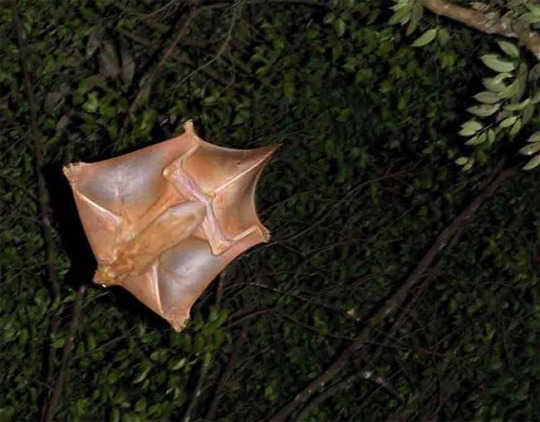
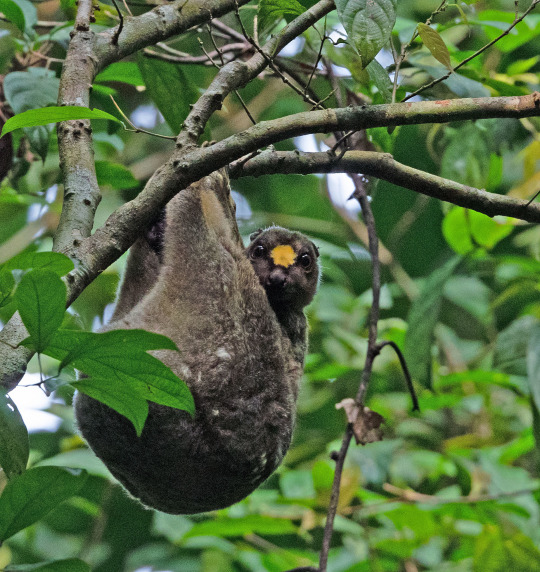
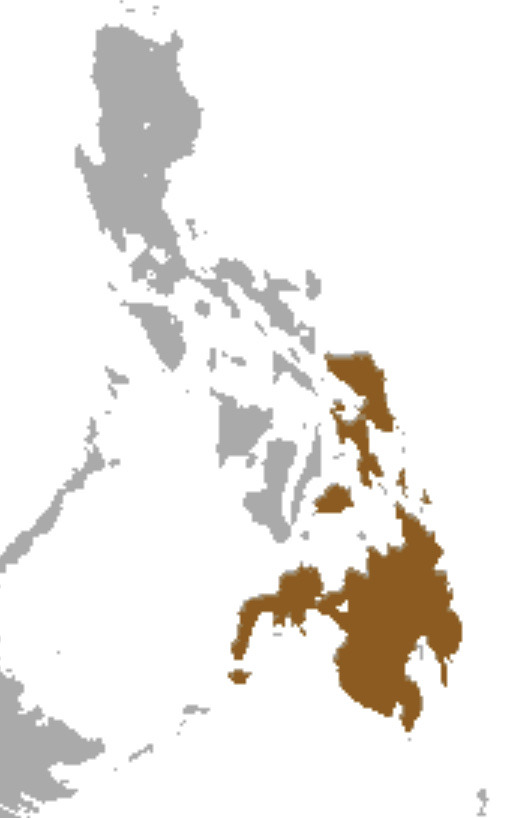
Philippine colugo
Cynocephalus volans
Family cynocephalidae, order dermoptera, mirorder primatomorpha
It’s the only one in its genus.
It is also known as the kagwang, and philippine flying lemur. It is not a lemur though, nor does it fly. It glides and is a close relative of primates. It isn’t a primate tho.
There are only two official members of its order. This guy, and the sunda colugo. There are two others that haven’t been formally classified: the bornean colugo and the javan colugo.
They stay up in the canopy or mid level of rainforests and rarely come to the ground. They’re kinda clumsy when climbing and have sharp claws and opposable thumbs.
They carry their babies with them using their skin like a pouch. Kind of like bats. They care for their young only until they’re weaned.
They are about 90% of the diet of the philippine eagle
@jackalspine @fifiibibii
5 notes
·
View notes
Text
I love you Accipitriformes I love you Falconiformes I love you Strigiformes I love you Caprimulgiformes I love you Otidiformes I love you Pterocliformes I love you Galliformes I love you Anseriformes I love you Sphenisciformes I love you Charadriiformes I love you Suliformes I love you Phaethontiformes I love you Pelecaniformes I love you Ciconiiformes I love you Gruiformes I love you Phoenicopteriformes I love you Podicipediformes I love you Gaviiformes I love you Ratites I love you Cuculiformes I love you Musophagiformes I love you Columbiformes I love you Apodiformes I love you Coraciiformes I love you Piciformes I love you Bucerotiformes I love you Coliiformes I love you Passeriformes I love you Leptosomiformes I love you Psittaciformes I love you Chiroptera I love you Eulipotyphla I love you Monotremata I love you Lagomorpha I love you Rodentia I love you Scandentia I love you Primatomorpha I love you Artiodactyla I love you Perissodactyla I love you Carnivora I love you Didelphimorphia I love you Pilosa I love you Diprotodontia I love you Peramelemorphia I love you Dasyuromorphia I love you Afrosoricida I love you Dermoptera I love you Pholidota I love you Sirenia I love you Hyracoidea I love you Crocodilia I love you Testudines love you Squamata I love you Rhynchocephalia I love you Anura I love you Urodela I love you Gymnophiona
1 note
·
View note
Text

I think most people are aware of the fact that humans are related to other primates such as chimps, gorillas, mandrills and probably even Curious George. As a matter of fact, humans ARE primates, which means we share a common ancestor with all other primates. The order Primate includes many species other than just humans and animals that we usually call "monkeys", it also includes lemurs and some other minor families.
However, what I was curious to know was what animals are the most closely related to humans after the primates. To find out, we need to go up the ranks in our phylogenetic tree. As seen on the image on top, primates are part of the mirorder (like an order, but bigger) Primatomorpha, which includes the order Dermoptera (yes, Greek nerds, this means something along the lines of "wing skin"). The order Dermoptera consists entirely of colugos, which are also known as flying lemurs. Despite their name, they are not lemurs and despite their appearance, they are not flying squirrels. They just happen to also be equipped with a patagium (the skin membrane they use to glide) due to convergent evolution. While this is surely interesting, colugos are quite obscure animals and I was looking for a group of animals that would be more "commonly known", even if a bit less related to humans.
We can go even higher up in our phylogenetic tree and see that Primatomorpha are part of the grandorder (like a mirorder, but even bigger) Euarchonta and have a sister order, Scandentia. Animals in the order Scandentia are referred to as "tree shrews", but again, the name is misleading because while they are indeed arboreal, they are not shrews. The image above has one example of these creatures, a tupaia, and while they are cute and all, they are still not what I would call a "commonly known animal". Also, note that the position of the order Scandentia in the evolutionary tree is actually debatable as some researchers place them as a sister clade* to the Glires.
Going one more rank up in our phylogenetic tree, we see that Euarchonta are part of the superorder (like a grandorder, but bigger, you get the idea) Euarchontoglires, which includes the clade Glires. Within this clade are found the orders Lagomorpha and Rodentia, which are both comprised of very well known animals, such as rabbits and rats. I think it's pretty cool to think that those animals are quite closely related to primates, and therefore, to humans. Probably this is why they are (sadly) used for animal testing of medicine and cosmetics, although they are also probably used because of economical reasons.
* I will one day make a post about this word, it's actually pretty interesting.
#animals#primates#humans#colugo#order#clade#dermoptera#primatomorpha#scandentia#euarchonta#euarchontoglires#glires#phylogenetic tree#phylogeny
9 notes
·
View notes
Text
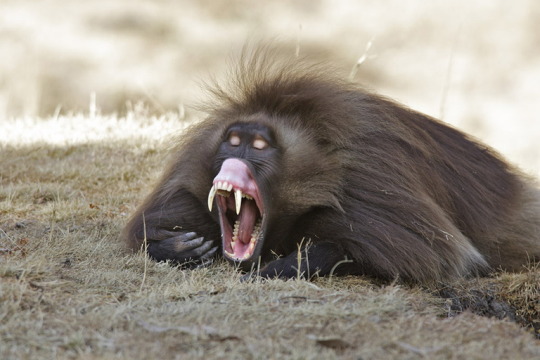
Gelada (Theropithecus gelada)
Photo by Sylvain Cordier
#fave#gelada#theropithecus gelada#theropithecus#papionini#cercopithecinae#cercopithecidae#cercopithecoidea#catarrhini#simiiformes#haplorrhini#primates#primatomorpha#euarchontoglires#boreoeutheria#eutheria#mammalia#tetrapoda#vertebrata#chordata
77 notes
·
View notes
Text
Do You Love The Colour Of The Sky?
Eukaryote
Orthokaryotes
Neokaryotes
Scotokaryotes
Podiata
Unikonta
Obazoa
Opisthokonta
Holozoa
Filozoa
Animalia
Eumetazoa
ParaHoxozoa
Planulozoa
Bilateria
Nephrozoa
Deuterostomia
Chordata
Olfactores
Craniata
Vertebrata
Gnathostomata
Eugnathostomata
Teleostomi
Euteleostomi
Sarcopterygii
Rhipidistia
Tetrapodomorpha
Eotetrapodiformes
Elpistostegalia
Stegocephalia
Tetrapoda
Reptiliomorpha
Amniota
Synapsida
Eupelycosauria
Sphenacodontia
Sphenacodontoidea
Therapsida
Eutherapsida
Neotherapsida
Theriodontia
Eutheriodontia
Cynodontia
Epicynodontia
Eucynodontia
Probainognathia
Prozostrodontia
Mammaliaformes
Mammalia
Theriiformes
Holotheria
Trechnotheria
Symmetrodonta
Cladotheria
Zatheria
Tribosphenida
Theria
Eutheria
Placentalia
Boreoeutheria
Euarchontoglires
Euarchonta
Primatomorpha
Primates
Haplorhini
Simiiformes
Catarrhini
Hominoidea
Hominidae
Homininae
Hominini
Homo
sapiens
(something might be missing and I know some might be controversial)
2 notes
·
View notes
Text
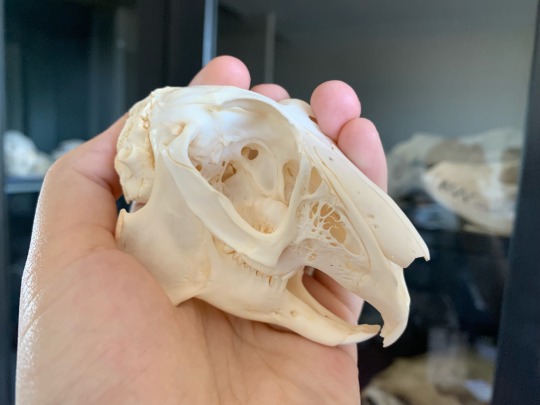
This skull may look like another rodent but it’s actually a white-tailed jackrabbit (Lepus townsendii)! Rabbits, hares, and pikas belong to the order Lagomorpha which is distinct from rodents. The two groups are related however, and form the clade Glires. Glires are a sister group of Primatomorpha, the clade that contains primates (including humans) and flying lemurs. How cool is that?
White-tailed jackrabbits specifically have a large range through much of the northern US and southern Canada. Two distinct subspecies are recognized, separated by the Rocky Mountains. The species as a whole is considered Low Risk by the IUCN but there are local population declines.
#vulture culture#natural history#osteology#personal collection#rabbit skull#jackrabbit skull#tw dead animal
95 notes
·
View notes
Text
Zootopia Fan Theory
Evolution occurred in the Zootopia Universe, just as it has in “ours”. Perhaps, somewhere along the way, there was some sort of divine intervention that had changed the direction of evolution. Not that there’s one supreme almighty deity within (or transcending) the Zootopia Universe, but simply that intervention has occurred on one or a few occasions.
So, on one occasion, the Primates order was simply cut off - as it’s suggested that no primates, presumably not even lemurs or lorises, have ever evolved. Or, perhaps, even cut off the Primatomorpha clade, - so that even flying lemurs never evolve. So, instead, the rest of the mammals (with a few possible exceptions) evolved to develop anthropomorphic features.
I’m not gonna use the term “theistic evolution”, since I think that has a specific meaning regarding how followers of Abrahamic religions (Judaism, Christianity, and Islam) reconcile evolution with creation - but I think most alternate universe divergences would best be explained with evolution plus divine intervention.
4 notes
·
View notes
Text
Aberrant
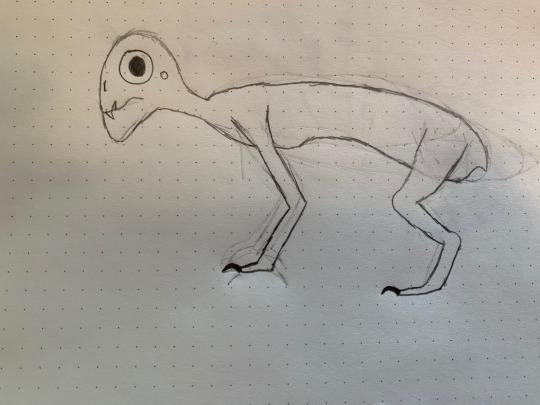
Kingdom: Animalia Phylum: Chordata Superclass: Tetrapoda Clade: Reptiliomorpha Clade: Amniota Clade: Synapsida Clade: Mammaliaformes Class: Mammalia Subclass: Theria Clade: Eutheria Infraclass: Placentalia Magnorder: Boreoeutheria Superorder: Euarchontoglires Grandorder: Euarchonta Mirorder: Primatomorpha Order: Primates Suborder: Haplorhini Infraorder: Simiiformes Parvorder: Catarrhini Superfamily: Hominoidea Family: Hominidae Subfamily: Homininae Tribe: Hominini Genus: Homo Species: H. xenos Common name: Aberrant Biology/evolution: Homo xenos, also know as the Aberrant, is a bizarre species found in many parts of Xenogaea. Since there is no ancestral species known from fossil records, with the earliest Aberrant specimen appearing in the fossil record around 30,000 years ago, scientists are unsure of how the creature evolved. Some say that they just highly-derived hominids while others believe that they are mutated humans or perhaps even hybrids between humans and non-human animals. Aberrants are placental, and feed their ifants via the mother's breastmilk. Aberrants live in patriarchal packs, where there is an alpha male. The alpha is easily-distinguished by by his more-prominent and tusk-like fangs, as well as having dark-red, circular markings around his eyes. The alpha gets first picks on everything, from food to mating rights. The alpha is also more-aggressive than his contemporaries, and is highly-territorial when it comes to maintaining his rank. It is not unusual for other males in the pack to be littered with scars from their fights with the alpha. Description: Despite being a hominid of close relation to modern humans, it possesses no external ears, lacks any form of body hair, has scaly skin, has eyes on the side of its head rather than at the front, possesses feet more akin to those of non-human primates, possesses long toes, and has back legs somewhat akin to a large cat. It also walks on all fours like other non-human primates. Unlike humans, they cannot speak, and instead communicate in a series of growls, hisses, croaks, barks, and grunts. Their main call is akin to a very-deep bullfrog croak. Their distress call is also eerily similar to human crying. Aberrants possess few teeth, with the only externally-visible ones being their fangs. Aberrants are also deceptively-intelligent, and can learn fast simply by copying things they see humans do. Like humans, they’re sexually-dimorphic: on all fours, males typically stand 3 feet at the shoulder and females around 2.5 feet. On their hind legs, males stand slightly-under 6 feet (due to a slouched posture while standing up) while females stand slightly over 5 feet. Range and habitat: Aberrants live across much of Xenogaea, from the mountains all the way down to the desert lowlands. They are quite-hardy animals, being able to survive in extreme conditions that would kill the average human. Diet: Aberrants are fairly-opportunistic creatures, and will feed on just about anything that is edible, from carrion to mushrooms. They are even cases where they have been reported to dig up graves to scavenge the corpses inside. Relationship with humans: Aberrants have a rather-strained relationship with humans. They are often wrongly-blamed for abducting children and attacking domestic animals, despite Aberrants being a rather-docile species that will, for the most part, leave humans alone so as long humans leave them alone (unless said Aberrant has their young nearby). In Xenogaea, they're referred to in the native language as "Isan-Beba", or "Forest-Baby", due to their distress call sound like human crying. Xenogaean myths also state that the Aberrants were once humans who committed unspeakable sins. And so, the gods cursed them, turning them into monsters. Their scientific name literally means "strange man" in reference to their chimerical appearance.
1 note
·
View note
Text
Friendly reminder that the closest relatives of the Primatomorpha (which includes us humans) are tree shrews, rabbits, and rodents.
So in a sense I guess we really are the giant rats that make all of the rules 👑����
#we all are the rat king of our own story#rats rats we are the rats#we're the giant rats that make all of the ruuuules#rats#rabbits#just some shower thoughts
0 notes
Link
0 notes
Text
倫理ツイート
@Primatomorpha: 各ヒーローの倫理観 デアデビル「絶対に殺しはしない。でも死なない程度にはなんでもする」ジェシカ「トラウマがあるので相手を怪我させたくない。でも、大切な人を傷つけるなら容赦はしない」ルーク「とりあえずボコボコにする」パニッシャー「悪人は絶対殺す。更生したい?解った。では死ね!」 from http://twitter.com/Primatomorpha
0 notes
Text

Western lowland gorilla (Gorilla gorilla gorilla)
Photo by Linda Tanner
#captive animal#fave#western lowland gorilla#western gorilla#gorilla gorilla gorilla#gorilla gorilla#gorilla#gorillini#homininae#hominidae#hominoidea#catarrhini#simiiformes#haplorhini#primates#primatomorpha#euarchontoglires#boreoeutheria#eutheria#mammalia#tetrapoda#vertebrata#chordata
43 notes
·
View notes
Photo
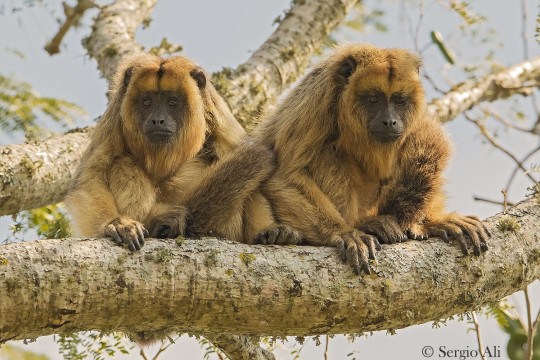
Black howler (Alouatta caraya)
Photo by Sergio Ali
#black howler#alouatta caraya#alouatta#alouattinae#atelidae#platyrrhini#simiiformes#haplorrhini#primates#primatomorpha#euarchontoglires#eutheria#mammalia#tetrapoda#vertebrata#chordata
107 notes
·
View notes
Photo
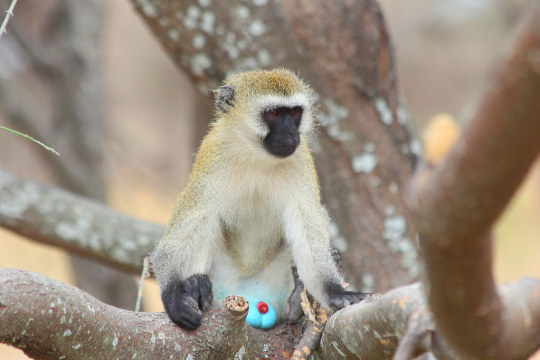
Vervet monkey (Chlorocebus pygerythrus)
Photo by Fabrice Stoger
#vervet monkey#vervet#chlorocebus pygerythrus#chlorocebus#cercopithecini#cercopithecinae#cercopithecidae#cercopithecoidea#catarrhini#simiiformes#haplorrhini#primates#primatomorpha#euarchontoglires#boreoeutheria#eutheria#mammalia#tetrapoda#vertebrata#chordata
2K notes
·
View notes
Text
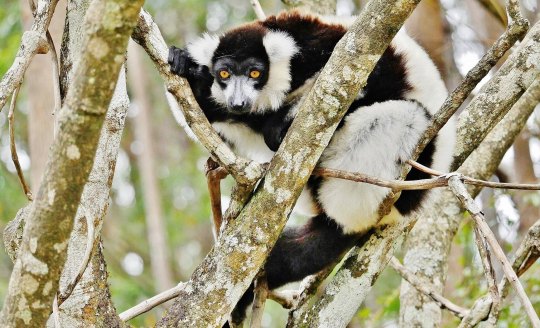
Black-and-white ruffed lemur (Varecia variegata)
Photo by Sue Roehl
#black and white ruffed lemur#ruffed lemur#varecia variegata#varecia#lemuridae#lemuroidea#lemuriformes#strepsirrhini#primates#primatomorpha#euarchontoglires#boreoeutheria#eutheria#mammalia#tetrapoda#vertebrata#chordata
47 notes
·
View notes